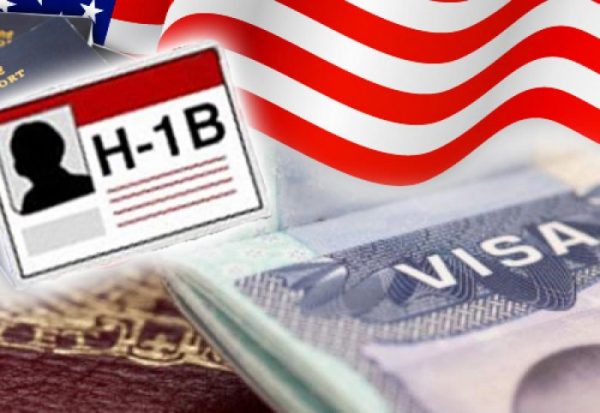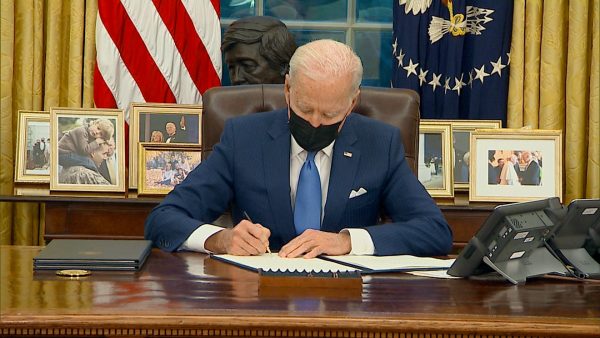Count the family together so that they may stay together
Cyrus D. Mehta
Ever since I co-wrote The Tyranny of Priority Dates in 2010, followed by How President Obama Can Erase Immigrant Visa Backlogs With A Stroke Of A Pen in 2012, I have steadfastly maintained that the current and prior administrations have got it wrong when counting visa numbers under the family and employment preferences. I do hope that the Biden administration will seriously consider this proposal, which I reiterate below.
There is no explicit authorization for derivative family members to be counted separately under either the employment-based or family based preference visas in the Immigration and Nationality Act. While they must still be counted, they should be counted as “one” with the principal family member. Each family unit takes up one visa rather than separate visas. The treatment of family members is covered by INA 203(d), enacted by the Immigration Act of 1990, which states:
A spouse or child defined in subparagraphs (A), (B), (C), (D), or (E) of section 1101(b) of this title shall, if not otherwise entitled to an immigrant status and the immediate issuance of a visa under subsection (a), (b), or (c) of this section, be entitled to the same status, and the same order of consideration provided in the respective subsection, if accompanying or following to join, the spouse or parent.
Nothing in INA 203(d) provides authority for family members to be counted under the preference quotas. While a derivative is “entitled to the same status, and the same order of consideration” as the principal, nothing requires that family members also be allocated visa numbers. If Congress allocates a certain number of visas to immigrants with advanced degrees or to investors, it makes no sense if half or more are used up by family members. I have also written blogs over the years, here, here and here, to further advance this argument.
The EB and FB numbers ought not to be held hostage to the number of family members each principal beneficiary brings with them. Nor should family members be held hostage to the quotas. We have often seen the principal beneficiary being granted permanent residency, but the derivative family members being left out, when there were not sufficient visa numbers under the preference category during that given year. If all family members are counted as one unit, such needless separation of family members will never happen again. Should only the principal become a permanent resident while everyone else waits till next year? What if visa retrogression sets in and the family has to wait, maybe for years? This does not make sense. Is there not sufficient ambiguity in INA §203(d) to argue that family members should not be counted against the cap? It is not contended that they should be completely exempted from being counted. As stated in INA §203(d), family members should be given the “same status and the same order of consideration” as the principal. Hence, if there is no visa number for the principal, the rest of the family does not get in. If, on the other hand, there is a single remaining visa number for the principal, the family members, however many there are, ought to be “entitled to the same status, and the same order of consideration as the principal.” Viewed in this way, INA §203(d) operates in harmony with all other limits on permanent migration found in INA both on an overall and a per country basis.
There is no regulation in 8 Code of Federal Regulations (CFR) that truly interprets INA § 203(d). Even the State Department’s regulation at 22 CFR §42.32 fails to illuminate the scope or purpose of INA 203(d). It does nothing more than parrot INA § 203(d). In Gonzales v Oregon, 546 US 243, 257 (2006) the Supreme Court held that a parroting regulation does not deserve deference:
Simply put, the existence of a parroting regulation does not change the fact that the question here is not the meaning of the regulation but the meaning of the statute. An agency does not acquire special authority to interpret its own words when, instead of using its expertise and experience to formulate a regulation, it has elected merely to paraphrase the statutory language.
It is certainly true that family members are not exempted from being counted under INA § 201(b) as are immediate relatives of US citizens, special immigrants, or those fortunate enough to merit cancellation of their removal. Yet, it is noted that the title in INA §201(b) refers to “Aliens Not Subject to Direct Numerical Limitations.” What does this curious phrase mean? Each of the listed exemptions in INA §201(b) are outside the normal preference categories. That is why they are not subject to direct counting. By contrast, the INA § 203(d) derivatives are wholly within the preference system, bound fast by its stubborn limitations. They are not independent of all numerical constraints, only from direct ones. It is the principal alien through whom they derive their claim who is and has been counted. When viewed from this perspective, there is nothing inconsistent between saying in INA §203(d) that derivatives should not be independently assessed against the EB or FB cap despite their omission from INA §201(b) that lists only non-preference category exemptions.
It is reiterated that derivative beneficiaries are not exempt from numerical limits. As noted above, they are indeed subject in the sense that the principal alien is subject by virtue of being subsumed within the numerical limit that applies to this principal alien. Hence, if no EB or FB numbers were available to the principal alien, the derivatives would not be able to immigrate either. If they were exempt altogether, this would not matter. There is, then, a profound difference between not being counted at all and being counted as an integral family unit rather than as individuals. For this reason, INA §201(b) simply does not apply. The Biden administration through the simple mechanism of an Executive Order can direct a different way of counting derivatives.
INA §§201(a)(1) and 201(a)(2) mandate that “family sponsored” and “employment based immigrants” are subject to worldwide limits. Does this not cover spouses and children? True enough but all is not lost. While the term “immigrant” under INA §101(a)(15) includes spouse and children, they were included because, in concert with their principal alien family member, they intended to stay permanently in this their adopted home. No one ever contended they were or are non-immigrants. However, this does not mean that such family derivatives are either “employment based” or “family sponsored” immigrants. No petitioner has filed either an I-140 or I-130 on their behalf. Their claim to immigrant status is wholly a creature of statute, deriving entirely from INA §203(d) which does not make them independently subject to any quota.
INA §203(d) must be understood to operate in harmony with other provisions of the INA. Surely, if Congress had meant to deduct derivative beneficiaries, it would have plainly said so somewhere in the INA. The Immigration Act of 1990 when modifying INA §§201(a)(1) and 201(a)(2) specifically only referred to family sponsored and employment-based immigrants in §203(a) and §203(b) respectively in the worldwide cap. This was a marked change from prior law when all immigrants save for immediate relatives and special immigrants, but including derivative family members, had been counted. In this sense, the interpretation of INA §203(d) for which we contend should be informed by the same broad, remedial spirit that characterizes IMMACT 90’s basic approach to numerical limitation of immigration to the United States As already noted, these immigrants ought to only be the principal beneficiaries of I-130 and I-140 petitions. Derivative family, of course, are not the beneficiaries of such sponsorship. At no point did Congress do so. Under the theory of expressio unius est exclusio alterius, it is entirely reasonable to conclude that Congress had not authorized such deduction. Surely, if this was not the case, Congress would have made its intent part of the INA. If the Executive Branch under President Biden wanted to reinterpret §203(d), there is sufficient ambiguity in the provision for it do so without the need for Congress to sanction it. A government agency’s interpretation of an ambiguous statute is entitled to deference under Chevron U.S.A. Inc. v. Natural Resources Defense Council, Inc., 467 U.S. 837 (1984)—often abbreviated as “Chevron deference”. When a statute is ambiguous in this way, the Supreme Court has made clear in National Cable & Telecommunications Assn. v. Brand X Internet Services, 545 U.S. 967 (2005), the agency may reconsider its interpretation even after the courts have approved of it. Brand X can be used as a force for good. Thus, when a provision is ambiguous such as INA Section 203(d), the government agencies charged with its enforcement may reasonably interpret it in the manner that we suggest.
Skeptics who contend that the INA as written mandates individual counting of all family members point to two provisions of the INA, §§202(a)(2) and 202(b). Neither is the problem that supporters of the status quo imagine. Let’s consider §202(a)(2) first. In relevant part, it teaches that not more than 7% of the total number of family and employment-based immigrant visas arising under INA §203(b) may be allocated to the natives of any single foreign state. Eagle eyed readers will readily notice that this does not apply to derivative family members whose entitlement comes from INA §203(d) with no mention of §203(b). Also, but no less importantly, INA §202(a)(2) is concerned solely with overall per country limits. There is no reason why the number of immigrant visas cannot stay within the 7% cap while all members of a family are counted as one unit. There is no reason why monitoring of the per country family or employment cap should require individual counting of family members. The per country cap is, by its own terms, limited to the named beneficiaries of I-130 and I-140 petitions and there is no express or implied authority for any executive interpretation that imposes a restriction that Congress has not seen fit to impose.
What about cross-chargeability under INA §202(b)? Even if §202(b) has language regarding preventing the separation of the family, it does not mean that the derivatives have to be counted separately. If an Indian-born beneficiary of an EB-2 I-140 is married to a Canadian born spouse, the Indian born beneficiary can cross charge to the EB-2 worldwide rather than EB-2 India. When the Indian cross charges, the entire family is counted as one unit under the EB-2 worldwide by virtue of being cross charged to Canada. Such an interpretation can be supported under Chevron and Brand X, especially the gloss given to Chevron by the Supreme Court in the Supreme Court decision in Scialabba v. de Osorio involving an interpretation of the provision of the Child Status Protection Act. Justice Kagan’s plurality opinion, though seeking to clarify the Child Status Protection Act, applies with no less force to our subject: “This is the kind of case that Chevron was built for. Whatever Congress might have meant… it failed to speak clearly.” Kagan slip op. at 33. Once again, as with the per country EB cap, the concept of cross-chargeability is a remedial mechanism that seeks to promote and preserve family unity, precisely the same policy goal for which we contend.
In a recent not so positive development, a federal district court in Wang v. Pompeo turned down a claim from EB-5 investors that derivatives should not be counted under the employment-based fifth preference (EB-5). Even though the claim focused on the EB-5 preference, it can be applied to all preference categories. Although plaintiffs argued that the annual limits do not apply to derivatives pursuant to INA §203(d) as enacted by the Immigration Act of 1990, Judge Tanya Chutkan disagreed on the ground that §203(d) is identical to the prior §203(a)(9) as it existed after the 1965 Act. If derivatives were counted under 203(a)(9), under the doctrine in Lorillard v. Pons, 434 US 575, 580 (1978), “Congress is presumed to be aware of an administrative or judicial interpretation of a statute and to adopt that same interpretation when it re-enacts the statute without change.” Moreover, in footnote 1 in Wang v. Pompeo, the court agreed with the government that “Congress spoke unambiguously spoke to the question at issue” and so the court need not address whether the government was entitled to Chevron deference.
Since this is a district court decision, the Biden administration can disregard Wang v. Pompeo and still choose to interpret §203(d) to allow for the unitary counting of principal and derivatives. Plaintiffs have appealed this decision to the DC Circuit Court of Appeals. If the DC Court of Appeals affirms Judge Chutkan’s decision, especially footnote 1, which indicates that INA 203(d) is unambiguous, it would be impossible for the Biden administration to change the interpretation of §203(d) under Chevron and Brand X within the jurisdiction of the DC Circuit Court of Appeals. This in turn will result in an untenable situation where those within the jurisdiction of the DC Court of Appeals would not be able to derive the beneficial impact of a reinterpretation of §203(d). It would thus be prudent for plaintiffs to delay taking up the appeal until the Biden administration decides whether they will change the interpretation under §203(d) or not. On the other hand, one would not complain if the DC Court of Appeals rules in plaintiff’s favor and overrules the district court decision.
Obviously, if Congress can affirmatively modify §203(d) to explicitly state that derivates will not be counted, that would be the best outcome. However, if Congress remains divided and there is no legislative fix forthcoming, and unless we are willing to watch the slow and tortured death of the priority date system in silence, President Biden must act on his own. Doing so will double or triple the number of available green cards without the creation of a single new visa. The waiting lines will vanish or be drastically reduced.
Cyrus D. Mehta is the Founder and Managing Partner of Cyrus D. Mehta & Partners PLLC. He is a prolific speaker and writer on contemporary immigration topics. He graduated with law degrees from Cambridge University and Columbia Law School.
Originally published in blog.cyrusmehta.com.

























